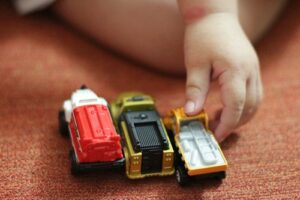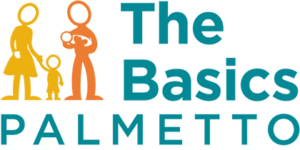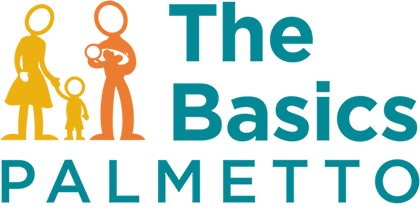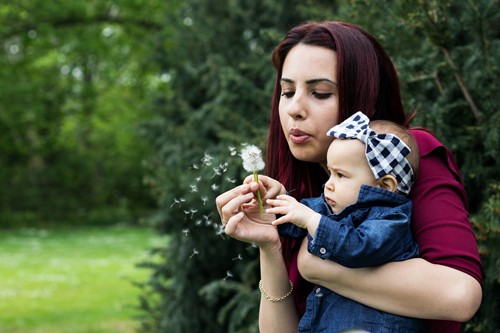In everyday ways, you’re helping your child learn basic math concepts without realizing it. Think about the words you use each day as you talk with your child:
Your diaper bag is heavy. // Let’s go up the stairs. // Eat three more bites and you can get down from the table.
Becoming good at math begins long before a child enters school. Even infants are wired to learn simple math ideas, including small numbers, patterns, and making comparisons. YOU have all that you need to prepare your child to be a problem solver. Using “math language” as you go through daily life is one of the easiest ways to build math skills.
Here are 3 simple ways to begin:
1. Count out loud. Children can count strings of numbers before they understand what numbers mean. Toddlers and young children LOVE to count. Seize their enthusiasm by making counting part of your everyday life.

– If you’re walking to the mailbox, “Let’s count as we walk!”
– As you push her on the swing, count in rhythm with each push.
– When you snap his onesie or pajamas, count with each snap.
2. Connect numbers to groups of things. This begins to teach them that numbers represent things, that “3” (for example) stands for 3 blocks. Here are simple ways to help your child connect numbers to groups of things.
– As you’re getting groceries, “How many apples am I getting? 1-2-3. 3 apples!”
– When it’s bedtime, “Go get two books and we can read them.”

– If your baby is eating in her high chair, “Let’s count your Cheerios. 1-2-3-4.” Then group them into a cluster a 4.
– When you’re changing your baby’s diaper or putting on his socks, “Let’s count your toes! 1-2-3-4-5-6-7-8-9-10.”
3. Talk about size, distance, and shapes. This helps children learn important concepts about measurement, space, and shape. Being mindful of these concepts will help you talk to your child in ways that are intentional, but still simple.
– When you’re loading groceries into the car, “This bag is heavy! Can you hold it and feel how heavy it is?”
– As you’re walking outside, “Wow, that is a big leaf! Can you find a smaller leaf?”

– To talk about concepts like distance, “We have a long walk to the park, don’t we? Is the walk to the mailbox long or short?”
– Begin pointing out shapes wherever you go and your child will begin to do the same. “The tires on our car are a circle. Do you see something that’s a circle?”
There are countless ways to use math language throughout your day. You don’t have to set aside extra time or buy fancy educational toys. By including your child in everyday activities, talking about the things you see, touch, and do, you are building a valuable foundation for math!

The Basics are 5 fun, simple and powerful ways that every parent can give every child a great start in life!
Here are some resources that can help you on your journey:
- Watch this short video for encouraging ways that real parents are doing Basic #3, “Count, Group, and Compare,” in everyday life. Click on the tips at the bottom of the page for Infants 0-12 months and Toddlers 12-24 months.
- Receive regular, FREE resources from The Palmetto Basics.
- Follow The Palmetto Basics on Facebook and Twitter. We provide encouraging, real-life, shareable content to help parents and caregivers!
- If you, your faith community, your organization, or your place of business would like to join us as a Champion for Children, contact us! palmettobasics@gmail.com.
Thanks for sharing this post and spreading the word about The Palmetto Basics to those within your circle of influence!

